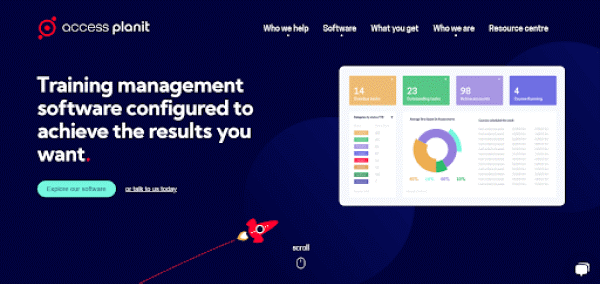
Table of Contents
1. Background Research
Research on the educational training courses and their individual modules, which include information technology, business and management, engineering, literature, mathematics, and science respectively.
Within the scope of this study, we will talk about various educational training programs and the modules that comprise them. The purpose of this study is to determine whether or not these training programs are successful in terms of the modules that they offer. Utilizing a survey questionnaire is one method for accomplishing this goal.
The questionnaire survey will be given to all of the students who have finished their educational training courses within the next year. The purpose of this is to find out how they feel about it and whether or not they believe it has been valuable to them.
The courses are as follows:
Information Technology
Module 1: Introduction to Information Technology
Module 2: Computer Systems
Module 3: Software Engineering
Module 4: Networking and Security
Module 5: Database Management System (DBMS)
Module 6: Networking and Internet Technologies (NIT)
Module 7: Mobile Computing, Application Development and App Distribution.
Business & Management
Module 1: Introduction to Business and Management
Module 2: Principles of Accounting and Finance
Module 3: Introduction to Marketing, Sales and Small Business Management.
Engineering
Module 1: Basic Engineering Designing & Technology for Beginners
Literature, Mathematics & Science
Module 1: English Language, Literature and Math’s for Beginners.
Module 2: Science for Beginners.
Information Technology (IT)
There are six different sub-modules that make up the information technology module. An introduction to computer hardware and software serves as the first topic covered in this lesson. Next up is an overview of operating systems, including Windows, Linux, and Mac OS, among others. The students will become proficient in the usage of a computer’s mouse, keyboard, and monitor. After that, participants learn how to install software on their own computers by following the instructor’s instructions and installing the software on their own machines. The third submodule consists of an introduction to networking, which is then followed by a practical session in which participants are asked to set up a network either at their place of business or at their place of residence. Concerns regarding users’ privacy and their online safety are the focus of the fourth sub-module. In addition to that, topics such as cyberbullying, internet banking, and online shopping are discussed in this session. In the final portion of this unit, students will get familiar with web development through the use of HTML5 and CSS3. (Mohammad, 2014)
Business & Management
The business and management module includes a final project in which students are required to manage a group of people for a period of one month. In addition, the business and management module includes three sub-modules, which are titled Accounting and Finance, Human Resource Management, and Marketing. Students will learn about the process of bookkeeping through classroom discussions as well as through hands-on learning activities such as calculating profits and losses in corporations using Excel spreadsheets or the QuickBooks program, which are both included in the Accounting & Finance module. (Mirzajani, 2015)
The classes are meant to assist students in becoming more prepared for employment in the real world. The classes are presented at predetermined times throughout the year at predetermined intervals.
The purpose of the educational training courses is to help you improve your knowledge, skills, and talents so that you can find work or advance your career.
The most effective strategy to increase the breadth of your knowledge and the depth of your expertise in a certain sector is to enroll in educational training courses. You should enroll in training classes that are specifically geared toward information technology if your goal is to become a more skilled IT specialist. If you want to be a better student leader, then you should enroll in training classes that are specifically geared at leadership.
Type of software:
The term “eLearning software” refers to a digital tool that can be utilized by an individual, a business, or an organization to develop online educational content and experiences. The phrase “eLearning software” can be thought of as an umbrella term that refers to a wide variety of distinct subcategories of specialized learning software. (Von Wangenheim, 2013)
Accessplanit is a software solution for training management that was developed to satisfy the demands of training providers and other L&D professionals who are responsible for the delivery of hundreds or thousands of courses. The software was meant to be user-friendly and intuitive. You can leverage it as a comprehensive learning platform that can help you streamline and automate a variety of processes by using it in this capacity. You are also able to easily build high-quality training materials with the assistance of its training module creator, which enables you to provide exceptional learning experiences for either your employees or your customers. Whether you are providing these kinds of learning opportunities for your customers or your employees, it is important to provide them. Because of its course management feature, it is also compatible with blended learning techniques. This is due to the fact that it enables you to conveniently schedule training events and courses. Consequently, blended learning strategies can make use of this feature. These events may take the form of in-person learning sessions, or they may be accomplished through the use of online learning platforms. (McCannon, 2020)

2. Proposed Solution
The following three laptops are considered to be the most suitable for educational learning programs:
- HP Spertre x360 (2020)
- Apple MacBook Air (M1, 2020)
- Lenovo ThinkPad X1 Yoga Gen 6
The HP Spectre x360 (2020) is the most recommended laptop for students taking academic programs. In addition to having a gorgeous display that is 12.3 inches in size, it possesses an excellent balance of performance and battery life. Because it has a keyboard that is not only easy to use but also highly comfortable, this portable computer is an excellent option for students who are interested in learning how to type.

Students who want to use a laptop for their educational coursework have another excellent option available to them in the form of the Apple MacBook Air (M1, 2020). This laptop features a portable design that makes it simple to transport it from place to place, whether you’re walking about campus or going somewhere else. In addition to that, it possesses a powerful CPU that enables it to operate numerous applications concurrently without experiencing any slowdown.

Students who wish to make use of their own personal laptops for educational purposes have another viable option in the form of the Lenovo ThinkPad X1 Yoga Gen 6 laptop. It boasts an excellent battery life of up to 15 hours on a single charge, which means that you will not have to worry about running out of power while you are in class or when you are taking your tests!

Specifications:
Table 1: Laptops Specifications Comparison
| HP Spectre x360 (2020)
| Apple MacBook Air (M1, 2020)
| Lenovo ThinkPad X1 Yoga Gen 6
|
Screen | 13.3-inch 4K (3,840 x 2,160) AMOLED | 13.3-inch, AMOLED (1920×1080) | 14-inch, 1920 x 1200p, IPS touchscreen, 400 nits |
CPU | 1.3GHz Intel Core i7-1065G7 (quad-core, 8MB Intel Smart Cache, up to 3.9GHz with Turbo Boost) | Intel Core i5-1235U (1.3GHz – 4.4GHz) | Intel Core i7-1165G7 |
Graphics | Intel Iris Plus (integrated) | Integrated Iris Xe | Intel Iris Xe |
Ram | 16GB LPDDR4 (3200MHz) | 8GB DDR4 | 16 GB |
Storage | 512GB SSD (PCIe, NVMe, M.2) | 256GB PCIe SSD | 512GB PCIe SSD |
Ports | 1x USB-A 3.1, 2x USB-C 3.1 with Thunderbolt 3, microSD card reader, combi audio jack | 1x Thunderbolt 4, 1x USB-C, 1x USB-A (3.2), 1x HDMI, 1x audio in/out, 1x microSD card | 2 x USB Type-C Thunderbolt 4 (DisplayPort, Power, and Data), 2 x USB Type-A Gen 1 (One always on), 1 x HDMI 2.0, 1 x 3.5mm combo jack, 1 x Kensington lock |
Battery Life (up to hours) | 15 | 13 | 15 |
Operating system | Windows10 | macOS | Windows10 |
Connectivity | Intel Wi-Fi 6 AX 201 (2×2), Bluetooth 5 | Wi-Fi 6, Bluetooth 5.1 | Wifi 6, Bluetooth 5.2 |
Camera | HP TrueVision HD 1080p IR Webcam | 720p | 720p w/ privacy cover |
Weight | 2.87 pounds (1.3 kg) | 2.56 pounds (1.16kg) | 3.0 lbs (1.35kg) |
Size | 12.04 x 7.66 x 0.67 inches (30.6 x 19.45 x 1.69 cm; W x D x H) | 11.98 x 7.95 x 0.51 inches (304.4 x 202.0 x 12.9mm) | 12.32 x 8.77 x 0.59 ins (313 x 223 x 14.9 mm) |
Price | 1299$ | 999$ | 1526$ |
BENCHMARKS:
HP Spectre x360 (2020) | Apple MacBook Air (M1,2020) | Lenovo ThinkPad X1 Yoga Gen 6 | ||
GeekBench 5 | Single-Core | 1,259 | 1,729 | 1,521 |
Multi-Core | 4,442 | 7,583 | 5,043 | |
Cinebench R23 CPU | Single-core | 1490 | 1,493 | 1245 |
Multi-core | 5443 | 6,586 | 4,476 | |
Battery Life (TechRadar movie test) | 10 hours 55 minutes | 11 hours and 15 minutes | 10 hours 39 minutes | |
Pros & Cons
Pros | Cons | |
HP Spectre x360 (2020) |
|
|
Apple MacBook Air (M1,2020) |
|
|
Lenovo ThinkPad X1 Yoga Gen 6 |
|
|
I suggest that the trainers get Apple MacBook Air (M1, 2020) computers so that they can use them in the instructional courses that they teach. The training of trainers and trainers, as well as other persons with experience in the field of education, would benefit tremendously from the utilization of this laptop in their professional development.
Because it offers both high performance and a reasonable price, the Apple MacBook Air M1 is an excellent choice for students taking educational classes. It comes with a DVD SuperDrive, an 11 Core i5 processor, 8 GB of RAM, a 500 GB hard drive, and 2 GB of graphics card memory. This computer is extremely quick and simple to operate. Because the speed of the CPU is also fast, it is able to work on numerous apps at the same time without encountering any difficulties.
I believe that educators who use this kind of computer to prepare their courses will find that having a laptop of this type will be beneficial to them. Because of its great performance and inexpensive price in comparison to that of other laptops now available on the market, this particular type of laptop is well suited for people who educate pupils as well as those who prepare their courses on computers. (Marsden, 2018)
References
Huang, C. L. W. W. S. a. W. W., 2019. Planning of educational training courses by data mining: Using China Motor Corporation as an example.. Expert systems with applications, 36(3), pp. 7199-7209.
Marsden, N. a. P.-I. E., 2018. Using blogging and laptop computers to improve writing skills on a vocational training course.. Australasian Journal of Educational Technology, 28(1).
McCannon, M. a. C. T., 2020. Assessing the technology training needs of elementary school teachers.. Journal of Technology and Teacher Education,, 8(2), pp. 111-121.
Mirzajani, H. M. R. A. A. a. L. W., 2015. A review of research literature on obstacles that prevent use of ICT in pre-service teachers’ educational courses.. International Journal of Education and Literacy Studies,, 3(2), pp. 25-31.
Mohammad, A. B. F. a. A.-Z. F., 2014. Educational and clinical impact of Advanced Trauma Life Support (ATLS) courses: a systematic review.. World journal of surgery, 38(2), pp. 322-329.
Von Wangenheim, C. S. R. a. B. A., 2013. An educational game for teaching SCRUM in computing courses.. Journal of Systems and Software, 86(10), pp. 2675-2687.
